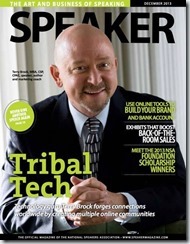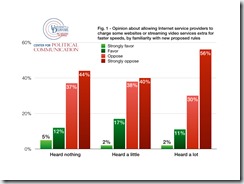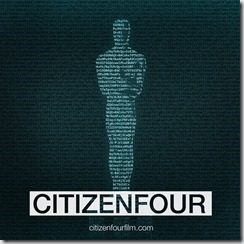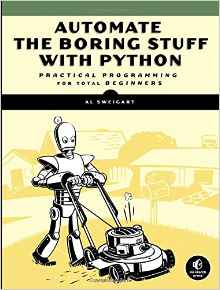Helping with youth group (@ Newtown Presbyterian church) [pic]: http://t.co/CxYuLt37
Helping with youth group (@ Ne…
Attending the San Jose Photosh…
Attending the San Jose Photoshop user group. New Lightroom functionality (@ Adobe w/ 2 others) http://t.co/ySSQ2wrc
Awesome network technology cen…
Twitter Weekly Updates for 2012-10-14
- Helping with youth group (@ Newtown Presbyterian church) [pic]: http://t.co/CxYuLt37 #
- Attending the San Jose Photoshop user group. New Lightroom functionality (@ Adobe w/ 2 others) http://t.co/ySSQ2wrc #
- Awesome network technology center, worth checking out. (@ Verizon Application Innovation Center) [pic]: http://t.co/ot4MiEPe #
EC Decision on Spectrum
Neelie Kroes (@NeelieKroesEU), Vice President of the European Commission’s Digital Agenda announced a decision intended to pave the way for broader 4G spectrum availability. Full text of the decision can be found here.
My summary is that spectrum (1920-1980 MHz paired with 2110-2170 MHz) that was originally authorized for 3G in 1999, will be allowed to be “refarmed” or used for 4G LTE services. The decision mandates that the spectrum be available by June 30, 2014 within the member states. This decision has the potential to increase the available 4G bandwidth to almost twice the amount available in the United States.
In practice, I expect a couple of different dynamics will be at play. The first is that 3G services are already using up plenty of the spectrum, which strikes me that unless a service provider has paid to license quite a bit of spectrum that they aren’t using, that this will play out over time as end users migrate from 3G to 4G services. The additional efficiencies of 4G should make that worthwhile to service providers.
Another consideration is new spectrum auctions intended to satisfy the carrier demand for 4G. Some countries may look at the ability to refarm spectrum as weakening the value of new spectrum auctions, and accordingly may accelerate plans to auction new spectrum while at the same time delaying the ability to repurpose the spectrum until the mandated deadline.
Overall, my personal opinion is that the EC has done a good job in recognizing the interest of the public and laying out a predictable manageable plan that service providers can build their capital investment plans around.
When is a $5M fine not much of a deterent?
So if I remember correctly, Morgan Stanley decided to increase the IPO at the 11th hour. Lots of concerns at the time that the growth wouldn’t support the valuation, but the problem was, the private equity market had already been completely invested and had driven up even higher than that. So do you let the market work and the private equity take a hit on their profits?
It seems like the choice was made to raise the IPO price to $38 per share which would give the private equity a chance to cash in from the public. To my math, $10 per share times 388M shares offered at the IPO is a pretty big number. ($3,880,000,000) The $5M penalty for undue influence is not much in comparison. The underwriting commission on an extra $3.8 Billion can probably cover the penalty.
The bigger problem to me is that there are really two markets now, the “pre-public” market for insiders, and the “public” market. The choice is really between two losing propositions. Do you invest at the private equity stage with none of the regulatory protection for investors, or do you wait and pay “full retail”, but at least have some laws intended to protect you?
My choice has been “none of the above”. I don’t see any alternative than letting others drive up prices, watching some people overpay, then waiting for the stock to find its real market price. I’d love to hear others opinions, maybe I’m missing something.
Facebook updates logged as aside on blog
Xmas!
Facebook updates logged as aside on blog
I thought this was the best thing that I saw at the CES show. Verizon has come up with a solution aimed at firefighters. It is a headset that includes a monitor that gives you a display and works hands free by voice control. You can get infrared views to see through walls, can monitor your (and others vital statistics). This will save lives.
Facebook updates logged as aside on blog
Antiquities
How to tell the Internet that your site exists
I met with a friend that was helping his wife, a pediatrician, create a website. He asked me about the basics of making sure that it showed up in search engine results. I wrote this up as a quick and dirty tutorial on how to let the internet know your website exists.
Before you do this, your site should be running and ready for visitors. It doesn’t need to be perfect, or completed, but does need to be functional. Before getting started, you also should determine whether or not your site has a sitemap available for spiders and robots to crawl. If not, then you can go to http://www.sitemaps.org/ to find out about them.
The process will go more quickly if you have an easy way to add pages to your site, such as by FTP. It will also help to have some basic info about the site available.
This should take around a half an hour. It should establish a solid foundation, but is should only be the beginning of a regular process of making your site easy for people to find. This also doesn’t get into the area of optimizing for specific search terms, rather is just a starting point.
Search engines provide a substantial portion of traffic to most sites, something in the neighborhood of 25-35% of traffic for the sites that I’ve analyzed. Search engines need to know that a website exists before they can index it and make it available to their audience. If your site is new, it is very likely that they do not know that your site exists. One you have told them to crawl your site, they will build an index of your content, and periodically check back to see if things have changed. The process is very simple, simply enter the URL of your site and the location of your sitemap into their forms. Each is slightly different, but the idea is the same for all of them.
For the US, the top 4 (karmasnack.com as of March 2013) are:
Google 86.3% Google webmaster tools
Bing 7.3% Bing webmaster submit
Yahoo 3.1% Submit your website to Yahoo
Facebook 1.4% Add a page to Facebook
Total 98.1%
Facebook uses Bing as a search partner, so letting three search engines know that your site exists gets you pretty good coverage right off the bat. Adding a Facebook page is quick and easy enough.
Next, I think that you need to exercise a bit of judgement, based upon your needs. Social media, by nature, is about communities, so you should focus your social media efforts on where your customers are. There is no harm in investing time building your own network on Pinterest (if you have visual products) or on LinkedIn (if you are a business professional) but the point is that you have to do the work of building your own network. Twitter is pretty widely used, but is increasingly becoming a media new release kind of channel. If you have cool video content ready, then by all means establish a presence on YouTube.
Directories, Forums, etc.
Directories are great, and an important part of the internet infrastructure. I run a small one, but frankly none of them have enough juice to move the needle much. My own belief is to find the communities or forums that your customers already belong to and build a presence there. Start by learning the community norms, then offer useful help on the subject that you are expert in. Once you establish trust, you can add your website to your signature. My recommendation is to first establish your credibility.
Talk to your customers and ask them what communities they belong to online that are relevant to your business. If I were a plumber, I would expect that Angie’s List is widely used. The main thing is to start a dialog with your own customers about how they look for information and who they trust. Some of them will seem obvious, but I promise you that you will probably be surprised by some as well.
Waking the Beast Without a Way to Control It
I was struck today by two seemingly unrelated stories today. The first was an observation that Dropbox had been "incredibly tonedeaf" in adding Condaleeza Rice to their board given the NSA concerns. The second story was about LinkedIn showing you open jobs at your own company.
There was some serious public blowback against Dropbox, such as an open petition to remove Rice, but my initial reaction was that it would be better to remove Dropbox. I had been having concerns already that I didn’t understand what some of their convenience features such as automatic image upload were doing, and worse yet, I couldn’t control which were uploaded and which weren’t.
The LinkedIn decision to bridge the gap between external and internal job searches is also problematic, but in a slightly different way. A few years back, a colleague of mine had observed that he could get a pretty good sense of who was looking for outside work by their LinkedIn activity. I know that every time I get a connection request from a headhunter, I have to think hard about the signal that it is sending. While we all know that companies are constantly trying to fill jobs and employees are looking for greener pastures, it causes a lot of additional conflict and noise when those activities become public.
The practical problem is that these companies really only provide users with a single mechanism for controlling the sensitive balance. Take it or leave it. While they may argue that they have settings buried deep in the bowels of their application, in practice, opting out is the only safe way that makes sense to most people.
There has been some interesting research at Carnegie Mellon that shows that when users are provided with easy and useful controls over privacy that engagement actually goes up. That is why these types of issues are so frustrating.
How to Build Social Capital–”Klout Matters” Review
I ran across Terry Brock through a mutual friend on Facebook of all places. I noticed that we’ve both worked in the telecom / technology industry and both shared an interest in social technologies. I had done graduated studies as part of the seminal “Birds of a Feather” group at Lehigh. I saw that Terry and Gina Carr had recently written a book, “Klout Matters”, so I decided to download it and give it a read.
I gave the book a first read on a long plane ride home from Denver last night. I intend to refer back to it often. The book contains enough valuable information and perspective that it warrants taking the time to really spend time with it, as well as, keep it around as a reference.
Klout Matters obviously focuses on Klout , which is a measurement tool that used for a while now, but offers quite a bit more value than that. The book clearly makes the point that Klout is a measurement tool, and that creating great content and engaging with people is the activity that you need to focus on. It gives some solid advice on building social capital, and then goes on to provide quite good information on how to do just that.
It starts a little slow, but does get into fantastic detail, recommendations, and guidance. It may be that given that I’ve been studying this area for the last 7 years that some of the foundation in the beginning seemed a bit long. Perhaps to a reader that is new to the subject, it is extremely valuable to show examples of how by position and listening to other experts, you actually can build a network.
All around, I would highly recommend it it anyone looking for an excellent way to get started in social media engagement.
I’m sure that I’ll be returning to it often.
Ashley Hendrix–Artist, Educator
I had the joy of speaking with Ashley Hendrix today. I’ve had the pleasure of knowing both her and her work for quite some time. I’ll be attending her commencement exhibit in a few weeks as she is granted her BFA. She’ll be spending next year finishing her Masters in Education. There is no doubt in my mind that given her patience, demeanor, and talent that she will be a fantastic educator.
She showed tremendous promise as a young adult, and has spent the last few years refining her vision, focus, and skill. 
This picture, Jeremy is part of her thesis. She has always had a tremendous eye for the beauty of people in everyday life.
She called me, as she has set up her personal website, and had been somewhat surprised by how far down her own name showed upon a Google search. (4 pages down).
I sent her a link to a post that I had written last year on “how to let the internet know that your site exists”. I think that answered the question that she had asked. But since we’ve known each other a long I took the liberty of telling her that I thought she still had more work to do. The front page of her site is crystal clear – Ashley Hendrix, artist, educator. It is visually pleasing, as you would expect. I gave her a couple of unsolicited comments on how to make sure that she really invests the time in creating a strong “about me” bio.
I also gave her a few more instructions that I thought that I should capture here for anyone else that is looking to improve their internet search ability. Once you’ve told the internet that your site exists, you then need to pay attention to a few more things.
1. Your content needs to tell your story. Your key words – in her case, Ashley Hendrix, artist, educator – need to be used early and often. Both search engines and people want to get the most important stuff first. My recommendation was to create a bio intro that said something like: “Raised in a creative family, art education started early for Ashley Hendrix….” It’s off the cuff, but manages to get her name, educator, and artist in the first few words. You don’t want to take it too an extreme and cram every sentence full of keyword contortions, but you do want to first tell people what you do and what makes you different.
2. You need pictures on every page. I think this is extra true for visual artists. (to think extent that you can be truer than true). 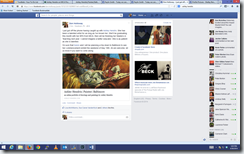 Given the fact that link previews have become so prevalent, they are “must have” for everyone. If you can’t come up with a good visual to illustrate a point, you’d better hope that someone is being paid to read it.
Given the fact that link previews have become so prevalent, they are “must have” for everyone. If you can’t come up with a good visual to illustrate a point, you’d better hope that someone is being paid to read it.
This shows the preview showing up because I’ve linked directly to the page with the picture.
3. Post your bio and a link to your website on appropriate sites. Some of them are “no brainers” others take a bit of work. I recommended that she tries for 10 sites.
The way that internet search engines rank websites (simplified) is that they combine the content relevancy with the content authority. Content authority is largely a factor of who links to you. Let’s take an example of medical advice. Two different people could give the exact same advice, but if only one was referred by the Mayo Clinic and 78 of the best hospitals in the country, it would be more trusted because of the authority of the referrers. The key is that the places linking to you need to be relevant. Being picked as a great artist by the Mayo Clinic and 78 of the best hospitals in the country is not very useful.
Going back to Ashley, her Bachelor of Fine Arts came from MICA, a highly regarded educational institution. They provide their students with a portfolio on their site. That’s a perfect place to start. She also already has a Behance portfolio. Facebook and Pinterest similarly should take around 1 minute each if you work slowly. I offered to create a link from my website here. (done with this post) and have also arranged to get a link from the tumblr site of one of my favorite people photographers. The fact is, if you pick the right people and sources, it is a win / win. They get to associate themselves with other “birds of a feather”. The fact is, I am proud to know Ashley and delighted to help her in any way that I can.
Just Don’t Ever Say No to Yourself
Had I known of Chris Matthews’ history as a speechwriter, I might not have been better prepared for the best commencement speech that I’ve ever heard.
After some local color, he got to his focus, “I want to speak about what I’ve learned all these years watching this country’s leaders–not about the politics that so much divides this country, but for a cause that unites all of us here today: the future of these graduates we’ve come to honor, that they get off to the best possible start in life, that they make the right decisions, the right moves, find the best ways to show and put to use what they’ve got.
He gave simple and direct advice.
Show Up – “I want you to build a muscle memory for those times when you have to choose between going to something–getting suited up–or skipping it.”
Ask! – Anyone in business out there knows that every salesperson needs to ask for the order, just like you have to ask for the date–don’t you?
The point that resonated most strongly with me was “The important little secret of human politics is that the man or woman who does give you your chance will back you up later. … You see, when someone gives you a job, they’re making an investment in you, a bet on you. People tend to double-down on that kind of bet.“
Here was Chris’ summary of his key points.
- Show up! Do everything you can to get in the door.
- Show up for your friends. Don’t wait for a classmate to call you. You be the one to call up and keep the friendship alive.
- When you see an opportunity, ask for it. Never say “no” to yourself.
- And hang on to your values–honesty, loyalty, duty, basic goodness.
All of that is simple advice, which is not to say it is easy. Full text of Chris Matthews’ speech to the OSU class of 2014.
Bio update @twitter
I’ve had “update Don Holloway on all social media” on my to-do list for months. It’s been in the perpetual task list noise floor. Too important to delete, not urgent enough to actually do. I’ve realized that I needed to break that down into tasks that I can actually do. <duh>
Twitter is an odd beast, but one worth paying attention to. When I first encountered it, I saw it as a channel, more like plumbing. It has a 160 character limit, which matches the SMS standard. It has also become widely recognized as a news source. It’s real time, unfilteredness, and ubiquity make it an excellent early source of information.
Writing a twitter bio is a bit of a haiku challenge. You only have 160 characters to tell your story. From a personal marketing perspective, it is the ultimate elevator pitch.
Hopefully, you’ve taken the time to make a mind maps, word clouds, or done something to document both how you want to be perceived and how you actually are being represented. I can promise you that an unfocused message will become part of the noise. And there is plenty of noise on twitter already.
@neilpatel wrote a great article on crafting your twitter bio. His checklist includes making it accurate by including your professional identify, exciting by including one word that is not boring, an accomplishment, and a hobby. I tend to divide my identity into work, community, creative, family, and personal personas. Whatever approach you use, the point is to create a genuine and focused portrait of yourself.
There are a couple of components to your twitter bio. Some of them may or may not be seen depending on the device, client, or logged in user that you’re accessing twitter from. The twitter developer api page lists details about all of the fields, many of which are system fields. Right now, we’re focusing on the user definable fields:
Name: – Your name obviously, but can also hold a title, role, or anything really
Screen name: – This is your @twitterhandle, I hope that you got a good one.
Location: – This is a field to provide a location
Description: Here is your 160 character placeholder
Time Zone: What time zone are you in
URL: You can list a URL
Profile pic: It’s a 400 x 400 px image, anything is better than nothing,
Cover photo: 1500 x 500 px: Relatively new, tell your story here
Link and text colors: Yes, you can change these, and it does send a message
Some of the system generated profile fields are worth noting. Most of them are activity driven, but are part of the presence that you’re putting across.
Followers you know: You are being judged by the company you keep
Joined Date: Prominently displayed, my current mission is to remove it.
Photos and videos: There is a display of these, if you haven’t uploaded pics, do.
Stats: # of tweets, # following, #followers, #favorites, #lists
I went through some of the people that I follow and here are some profiles that caught my eye.
 |
 |
| Handle | @MaryManners1 |
| Name | Mary Manners, author |
| Description | Award-winning author of more than 30 contemporary inspirational romances with Pelican Book Group. I love coffee, long runs, and Smoky Mountain sunsets. |
| My comments | I get what she’s about, extra style points for including “author” in the name. Her links and text are in an attractive color. No location listed which causes “Joined December 2011” to be emphasized. I can’t figure out why twitter join date is shown for some and not for others. |
 |
 |
| Handle | @lisakentzell |
| Name | Lisa Kentzell |
| Description | TWiT CEO, 49er Fan, Thrill Seeker and Michael’s Mom. |
| My comments | Profile and Banner pics reinforce and expand upon her description. Style points for brevity. Her profile does not show “Joined XXX”, so I know that it can be done. I don’t think the joined Twitter date is that useful for anyone other than twitter. |


Handle
@tsehjhh
Name
James H. Holloway
Description
Technology Support Trainer – Father – Blogger – Husband
My comments
His location is shown as Brussels, Belgium, a link to his photo site is included, as is the twitter joined date, smashing my hopes that having two user defined fields would make it go away. His cover picture shows him with his children. This paints a good picture of a tech guy that family is at the center of his life. As I’m family, that works for me. I happen to know that he’s got a lot more going on.


Handle
@ladygaga
Name
Lady Gaga
Description
The lady herself is not just a chameleon in person, but a chameleon in music.
My comments
Her profile picture is a wonderful one of her done 50’s black and white style. You may recognize Tony Bennett in the background behind the shades. Her background image is of her and Tony Bennett on the left with text on the right saying “Tony Bennett & Lady Gaga – Cheek to Cheek – The #1 Album available now”. She has a tweeted pinned to the top where you can buy the record album. Style points for text colors and buttons matching the overall theme. I suspect that she counts success in little monsters and sales, not in “style points” though. And she sells.

Handle
@billydelia
Name
Billy Delia
Description
drums + other things in @grizfolk insta: billy_delia
My comments
His profile picture is a picture of him playing drums. Location is Los Angeles. URL is for the band. Extra style points for putting the band’s twitter handle and IG in your profile. I know for a fact that the band just played to a sold out crowd at Radio City Music Hall, has a song featured in the Mr. Peabody DVD now in stores. There is currently no cover pic, so this is an easy fix.
 |
 |
| Handle | @beinglizbreen |
| Name | Liz Breen |
| Description | Associate Producer @WordGirl_PBS. MFA in Writing Candidate @VCFA. @BU_Tweets Alum. Opinions are that of my evil twin. #Ham #Binders |
| My comments | Her profile picture shows her sense of humor. Her background images shows WordGirl, the show that she produces. Bonus points for conveying a both the personal and professional holistically. It would be really nit-picking to deduct points for not having Captain Huggy Face featured more prominently, but I am capable of being petty. Might also benefit from some Gaga style show plugging text |
 |
 |
| Handle | @donholloway |
| Name | Don Holloway |
| Description | Focused on mobile technology and mobile applications |
| My comments | My profile picture is me in my office from a webcam from like 6 years ago. The background image is fairly recent showing me and family on top of Arthur’s seat. My location is listed as “Bucks County, Pennsylvania, along with a link to my website. It shows “Joined May 2008” which I am now taking personally. It isn’t direct enough about my current work, nor actually very interesting. My old background (which is what I see) was of cell towers. I had to log in as a different Twitter user to see what my profile looks like to others. Nothing says music, nothing says Gooner. |
Hopefully, you’ve gotten a sense of what all your twitter profile should be. First, you need to decide what aspects of yourself that you want to include. I lean towards a full view of both professional and personal. Once you know what you want to say, you need to look at the elements (name, description, location, URL, and images to see if that story is being told.
As always, I love the conversation, so please comment and share your thoughts and experience. I will weed obvious spam, but am always willing to give someone a chance to share.
Net Neutrality– Who’s informing the public? (or listening to them for that matter?)
I spoke today with Paul Brewer, who is part of the University of Delaware Center for Public Communication. They conducted an independent opinion poll on net neutrality. They had been surprised to see that there was almost no research on the subject, even less that had not been sponsored by someone with a position.
The main finding was that the majority of the public really didn’t know anything about net neutrality at all. The majority of those that did had gotten their information from satirical late night news sources. John Oliver had the highest. They used a good and objective methodology, which required careful wording of the questions due to the complex nature of the subject.
They didn’t use the phrase “fast lanes” but asked questions that went to the heart of whether or not the public want tiered internet services. The finding was that the public does not. The more informed the sources were, the more strongly felt the opinion was.
Perhaps the most illuminating finding was that people that watched streaming video were much more likely to be familiar with the issue than people that only relied on traditional cable programming. I may need to have a good think about it, that might be the whole issue in one single factoid.
You can download the full report here.
Collecting your Diary
A couple of things conspired to make me think it was time to make sure that I’m capturing and keeping my own data. I’ve been keeping a self hosted WordPress site for many years, but frankly, rarely update it. I tend to think of it as appropriate for long form writing with no actual audience.
If I want people to read something, I tend to post in Facebook or Twitter, sometimes Google Plus.
I was looking at some cutting edge cellular network planning tools that incorporate twitter location data as a reference to compare against cellular network data.
It made me realize that there is problem an awful lot of data that I could use to document where I was, what I was doing, etc. A passive diary so to speak. I’ve been aware that other’s were tracking what I was doing, but had this epiphany that it might be nice if I actually used that data.
The other news item that caught my eye was to see that Google is abandoning much of it’s archival activities. It just doesn’t seem relevant to their core mission anymore. Which added some urgency to me to make sure that I download dumps of my data from Facebook, Google, 4square while I can.
My intention is to import that into some type of blogging platform such as this one, so at least I have access to it.
I’m most familiar with WordPress, but have lately been looking at some others based on Python (my current programming kick). Hopefully I’ll share my findings.
Here are the links to instructions for downloading your information from major social media.
1. Facebook.
2. Twitter
I would love to hear if anyone has any tools for re-importing this data into some type of CMS.
A “Proof of Principles” Moment
I love my country and I love the principles that my country stands for. We believe in individual freedom. We believe in free speech. We believe in limited powers of government. We believe that you are innocent until proven guilty.
When I was 16, I spent a summer living in France. This was not long after Nixon had left office after his abuse of executive powers came to light. What surprised me was the high regard that the French held for the American people because we actually did something about it.
I have been increasingly worried about the damage to our country being done by abandoning some of our dearest principles. In a recent Ted Talk, a European security expert @mikko came to a pretty obvious conclusion. He recommendation is that the rest of the world that are “foreigners” had better start developing their own technology and get off US systems as quickly as possible.
The US commitment to our principles has always been a positive differentiator. We have earned the world’s trust. That trust is now under scrutiny, not because of the Snowden revelations, but because we are not standing behind our own principles. Free speech is a founding principle of our great nation, yet I continue to read that the US government is still operating “business as usual”. Intelligence agencies continue to overuse “gag orders. The President is hedging, explaining that he supports encryption, yet uses terrorism to justify current practices.
My hope is that Citizenfour winning the award for the best documentary at the Academy Awards will act as a catalyst to remind us of our principles.
Net Neutrality – An Accomplishment
The FCC voted yesterday to establish clear rules intended to protect an open internet and promote competition. As an initial reaction, it strikes me that the rules are clear and enforceable. The full set of written rules has not been published yet.
 There are clear rules against an internet service provider blocking or throttling traffic. They may not create “fast lanes”. There will be increased transparency, particularly in the case of reasonable network management practices. In those cases, as well as, zero rating (think free Spotify) or peering (think Netflix) there will be oversight and review. While there is potential for some policy changes alongside regime change, it’s a reasonable answer to a complicated issue.
There are clear rules against an internet service provider blocking or throttling traffic. They may not create “fast lanes”. There will be increased transparency, particularly in the case of reasonable network management practices. In those cases, as well as, zero rating (think free Spotify) or peering (think Netflix) there will be oversight and review. While there is potential for some policy changes alongside regime change, it’s a reasonable answer to a complicated issue.
Verizon’s Public Policy group has issued a protest in Morse Code, a appropriate way for them to highlight the problems with using throwback law to manage today’s technology. We can expect to see legal challenges from the ISPs in addition to complaints, but my personal feeling is that the large ISPs will benefit from clear definitions and rules over the long run. Evidently the initial stock market results seem to agree.
In an era when gridlock and infighting is the norm, I think it is important to recognize that this rulemaking represents a significant accomplishment. While the courts and marketplace will have their say in determining what the internet ends up being, it is important to recognize a job well done by the FCC. This is a complicated issue, and they have done an excellent job of managing an open and transparent process.
Automate the Boring (Sales) Stuff with Python
Automate the Boring (sales) Stuff with Python
This is a great book for anyone that is interested in making the transition from learning Python code to actually creating programs that do useful things.
The book includes a basic overview of Python. It provides practical examples, starting with how to read and write data to files, then quickly moves into webscraping, creating spreadsheets, image manipulation, and other useful techniques.
It is both well thought out and well written. I’ve listened to a podcast interview of the author, Al Sweigart. He is an educator as much as a programmer. Some of his other work focuses on using games to teach young people about Python. In this case, the focus is on practical utility for adults.
This approach lines up well with my own views. We are just starting to realize the advantages of what I call computer assisted intelligence. For many years, people have viewed human and computer intelligence as an either/or proposition. Man versus machine. Automation or people.
It turns out that the answer to “Who plays the best chess” was neither the Grandmaster nor Watson. The winner was a smart kid with a cheap chess computer. People learn what an application does well, but also when they need to take over control.
People’s contributions become more valuable when they take advantage of computer assistance. For people in sales, this value goes directly to top line revenue growth. A computer assisted sales person should be able to book more business. One of the biggest challenges can be that each sales person has a different set of challenges, customers, and skills.
The root cause of failed sales automation initiatives is the imposition business processes that do not improve the ability to deliver more sales. There are many reasons for this. The most common is that management has prioritized system requirements for forecasting and reporting functions, not for sales. The sales environment is another main reason.
The sales environment is dynamic and competitive. Customers and competitors both present new challenges. The best salespeople adopt their strategy and process to the environment, not to internal systems.
Automate the Boring Stuff provides a great solution for this challenge. It puts the power of automation squarely in the hands of the sales person. It provides a great foundation in how to read and write data from spread sheets, how to scrape webpages for information, and most importantly, how to automate these processes for increased efficiency.
The book is subtitled “Practical programming for total beginners”. At the time that I read it, I wasn’t a total beginner, but would hardly call myself an accomplished programmer either. I skipped the first section on programming basics and went right to the section on reading and writing files to a disk. I then jumped to reading and writing excel sheets. In a fairly short time, I found two things. First, that I could actually read and write excel programatically in Python. The second was that I wanted to go back and read up on some of the foundational stuff that I had skipped over.
It is well indexed, gives wonderfully practical advice, and strikes a great balance between informing directly and encouraging you to “kick the tires” and learn for yourself. I’m working on a contact management tool for myself that pulls contacts, looks for duplicates, completes information from other sources and allows me to pick and choose what I upload into other systems and formats it accordingly into an excel spreadsheet format.
I would recommend this book for any adult that is interested in learning Python and would prefer to focus on things that will deliver practical results. Al provides the full text of his book online, so you can check it out and see its value for yourself.


